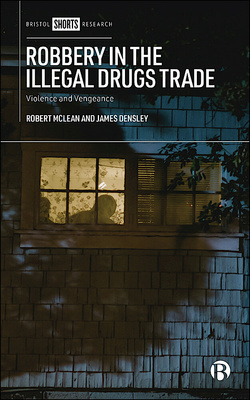The sudden death of US actor Michael K. Williams in September 2021 had many criminologists like us reminiscing about his acclaimed performance as notorious stick-up man Omar Little on The Wire. With his scarred face and sawed-off shotgun, Omar stalked street-level drug dealers and robbed drugs stash houses, whistling ‘The Farmer in the Dell’ as he went. But Omar was more than just a robber. Beneath his bulletproof vest was the tender heart of a complex character, someone with a compelling backstory and strict moral code; someone who walked a fine line between crime and justice.
It is credit to Michael K. Williams that Omar comes to most people’s mind when they think about robbing drug dealers. But truth is stranger than fiction. For the last three years, we’ve interviewed robbery victims and offenders in Glasgow and West Scotland for a new book that examines robbery in the context of illegal drug markets. In the ethnographic tradition of Randol Contreras, Bruce Jacobs, Richard Wright, Scott Decker and others, we sat down with the real-life Omars to ask them what they do and why.
We learned that robbery is a perennial threat for drug dealers because drugs are illegal, the drug economy is cash-based, and there is no legal recourse for drug sellers when transactions go awry. For obvious reasons, drug dealers cannot call the police or file an insurance claim if they are robbed. Instead, drug dealers must police themselves by carrying weapons for protection and retaliating with violence. Violence is integral to the drugs business and robbery is but one iteration of it.
People who rob drug dealers often are drug dealers themselves. They leverage the ‘logic of violence’ and inside knowledge of the drugs trade to target rival dealers and force them out of business. Drug dealers also rob their own suppliers and customers, suggesting there is no honour among thieves. Being victimised by someone you trust was especially traumatising. Still, we found intra-gang robbery was just as common as that between rival gangs.
When drug dealers rob drug users they use debt-bondage – forcing someone to work to pay off their debt – as a strategy to continue robbing them into perpetuity. However, drug users also rob drug dealers, seizing the opportunities afforded them in the criminal marketplace to exploit dealers at times and in places where they are most visible and vulnerable, including on social media. For example, one of our interviewees used classified ads on Gumtree and images of illicit goods on Snapchat to lure his victims. Robbery was the price of doing business and when victims fell foul of confidence tricks and ambush attacks, interviewees used ‘techniques of neutralisation’ to absolve themselves of responsibility.
People rob drug dealers for drugs and money, but also for the status rewards robbery can provide. In fact, robbery was often about chasing a high. It was literally a by-product of servicing drug dependency, but other addictions were motives too – alcohol, gambling, consumption, the thrill of moral transcendence.. Addressing these ills, rooted in multigenerational poverty and childhood trauma, was key to leaving a life of crime behind, our interviewees said, and religion was often the mechanism to do so; it helped people find forgiveness for those who had wronged them, and find healing and purpose in life after robbery.
Robbing drug dealers became an attractive option for career criminals after technological innovations like alarms, CCTV cameras and time-delay locks made robbing banks and businesses prohibitively difficult. The expansion and evolution of the global drugs economy further created conditions conducive for crime to thrive. The implication here is that robbery is susceptible to situational crime prevention measures that advance and extend capable guardianship, but violence is inevitable so long as illegal drug markets exist.
In 2020, there were 1,339 drug-related deaths registered in Scotland – the most since records began. People in Scotland’s poorest areas were 18 times more likely to die from drugs than those in the wealthiest. A focus on the social determinants of health, from housing to education, rather than on criminalisation, and properly funded treatment is needed to truly stop the violence.
It may not grab headlines like knife crime and homicide, and its protagonists are not always as memorable as Omar Little, but robbery is a serious, violent crime that is endemic in some of the marginalised communities we studied. It is fully deserving of our attention – and action – if we are to address the consequences of the illegal drugs trade in their entirety.
Robert McLean, Ph.D., is Lecturer in the School of Education and Social Sciences at the University of the West of Scotland (UK) and James A. Densley, D.Phil. (Oxon), is Professor and Department Chair of Criminal Justice at Metropolitan State University (USA).

Robbery in the Illegal Drugs Trade: Violence and Vengeance by Robert McLean and James A. Densley is available on the Bristol University Press website. Order here for £38.39.
Bristol University Press/Policy Press newsletter subscribers receive a 35% discount – sign up here.
Follow Transforming Society so we can let you know when new articles publish.
The views and opinions expressed on this blog site are solely those of the original blog post authors and other contributors. These views and opinions do not necessarily represent those of the Policy Press and/or any/all contributors to this site.
Image credit: Rachel Bellinsky on Stocksy


